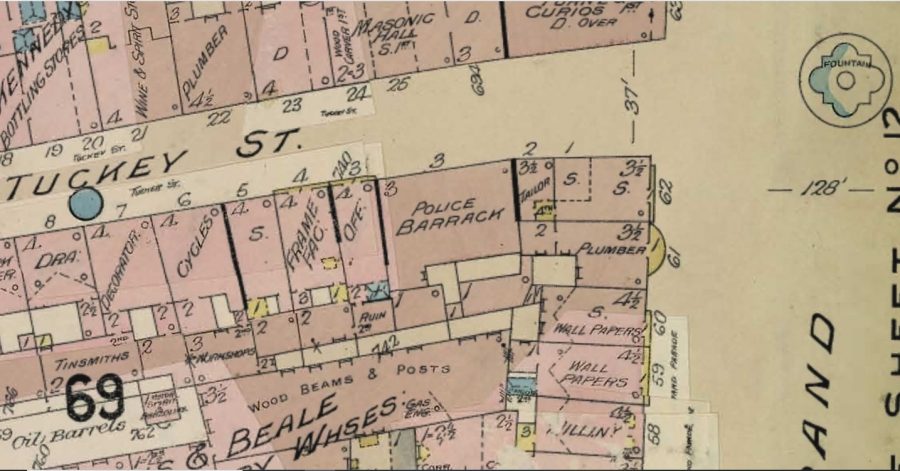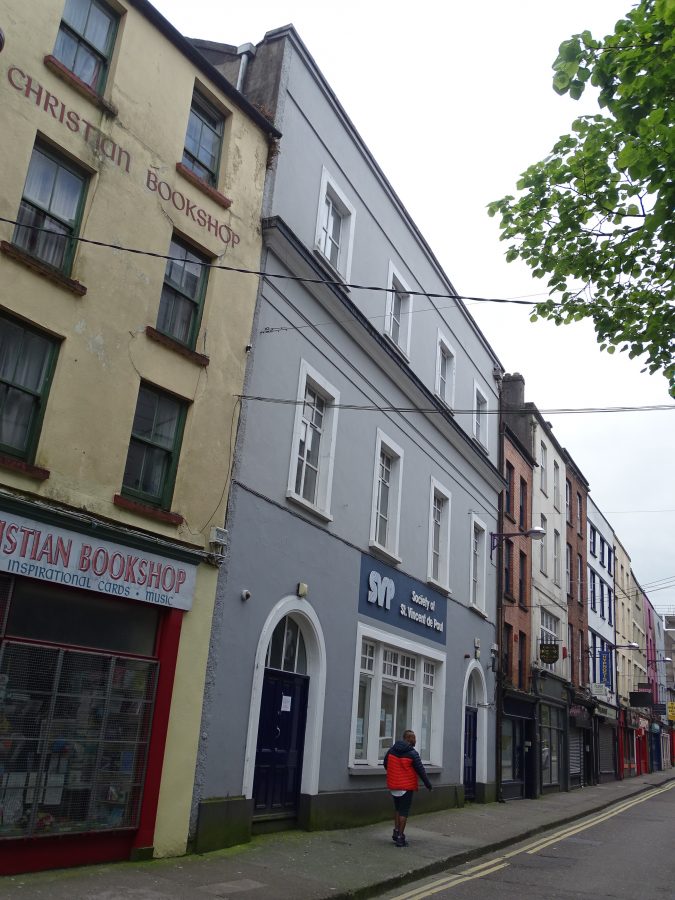
Kieran’s Our City, Our Town Article,
Cork Independent, 21 May 2020
Remembering 1920: The Gathering of Intelligence
The witness statements of the Bureau of Military History offer much insight into the Irish War of Independence. There is much to gleam from the Cork context on IRA activity and the gathering of intelligence by Cork Brigade no.1 across April and May 1920.
Michael Murphy (Commandant, 2nd Battalion Cork No. 1 Brigade, O/C, Cork No. 1 Brigade Active Service Unit/ witness statement 1547) relates that early in the month of April 1920, an order was received from General Head Quarters Dublin, to the effect that all income tax offices should be burned at the same time on a fixed date. This action was to be taken all over the country. The aim was to destroy all records and thereby cause a considerable financial loss to the British Exchequer, as well as completely disrupting the collection administration.
There were two income tax offices in Cork City one at the South Mall, which was in the 1st Battalion area, and one at 33 South Terrace the 2nd Battalion. Michael relates that for days before the operation took place, he placed men on watch near the South Terrace offices to note the number of staff employed, the times of arrival and departure of the staff, and the number and location of the rooms in the building occupied by the income tax authorities. Petrol was commandeered some days prior to the burning.
Shortly before 8pm on 5 April 1920, the petrol was taken in horse carts to the vicinity of the South Terrace offices and Michael with about twelve other men, entered the building. The offices occupied the first and second floors over which were offices used by the British Pensions Board. The first job of Michael’s unit was to get all the record books out on the floors, loosen the pages and spread them out. There was no staff in the building at the time. The building was then set alight and soon gutted. About 50 to 60 men of the 2nd Battalion were engaged on the job that night filling petrol tins and doing armed guard (carrying revolvers) in the area.
Michael V O’Donoghue (Engineer Officer, 2nd Battalion, Cork No.1/ witness statement 1741) notes that during the spring and summer of 1920 the active Volunteers of A-Company did quite a lot of scouting and spotting. They usually performed their intelligence chores in pairs. Michael details in his witness statement: “A regular beat of ours was the Western Road between the Muskerry Station and the Gaol Cross. Two hours was the maximum duty time, but usually the scouting pair were relieved at more frequent intervals. Our main objectives were to note accurately all enemy movements and activities and details of time, direction, number, type, were to be precise…As a result of this intensive work, the regular movements of all enemy forces along the Western Road in daytime was well known to IRA intelligence. Even the off-duty activities of police and soldiers were also quietly noted”.
Another beat of A-Company was the Grand Parade and the South Main Street, which ran parallel to it. On Tuckey Street the Royal Irish Constabulary (RIC) had a large and strong barracks with a garrison of about thirty. It was A-Company’s job to note as minutely as possible all the activities of police during the day and night. Firearms for A-Company were held in a high room of the college tower of UCC, which continued as a store and dump for arms across 1920 and 1921.
Leo Buckley (Staff Officer, Intelligence, Cork No. 1 Brigade/ witness statement 1714) was a skilled telegraphist in the GPO, Cork. The Cork No.1 Brigade was anxious to obtain copies of all coded telegrams passing through Cork Post Office to and from British Army and RIC sources. The key to the codes used was obtained and accordingly from 1920 onwards, Leo supplied the Brigade with copies of all coded telegrams passing through the Post Office. He made a daily delivery of coded telegrams to Brigade Staff. When they were not available Leo left the copies with Nora Wallace, who then conducted a newsagent’s shop in Brunswick Street (now St Augustine Street). If a priority telegram came through, it was copied and handed over immediately to the Brigade Staff. The British Authorities made frequent changes in the key to the codes, but any changes made were notified in one of the coded telegrams.
Seán Healy, Captain (A-Company, 1st Battalion, Cork I. Brigade/ witness statement 1479) in his witness statement notes that a very strict censorship of letters and parcels was imposed by the British authorities during the years 1920 and 1921 with the result that none could be sent by post. Therefore, other means of communication had to be found. Railwaymen came to the rescue. Special agents were appointed at all the big railway stations who would handle these dispatches. Men employed in Booking Office, Parcels Office and Cloak Room could be trusted.
Robert C Ahern (Intelligence Officer, Cork No. I Brigade/ witness statement 1676) recalls he organised the arrangements for transmitting weekly reports by D-Company men engaged in various occupations. Certain men employed in public houses, hotels, railways, on the docks and in business houses, reported anything, no matter how trivial it might appear, which related to enemy activity or personnel. The intelligence officers of the nine companies comprising the 2nd Battalion met each week and considered these reports and sent them upstream. One result of the extensive system of intelligence developed in the 2nd Battalion was the numerous and successful raids carried out by men of the battalion on the premises of the Cork-Bandon and Cork-Macroom railway in Cork City. To these stations were consigned an enormous quantity of military stores of all kinds – provisions, clothing, boots, bicycles, and general canteen supplies for the large military barracks in Cork and the south west generally. The military material was taken to a dump prepared in the grounds of the Cork Agricultural Society’s showgrounds at The Marina.
Captions:
1049a. Section of Goad’s insurance plan for Tuckey Street, 1915, which shows the RIC Barracks (source: Cork City Library)
1049b. Former site of Tuckey Street RIC Barracks, now the present day site of the St Vincent de Paul offices (picture: Kieran McCarthy)
